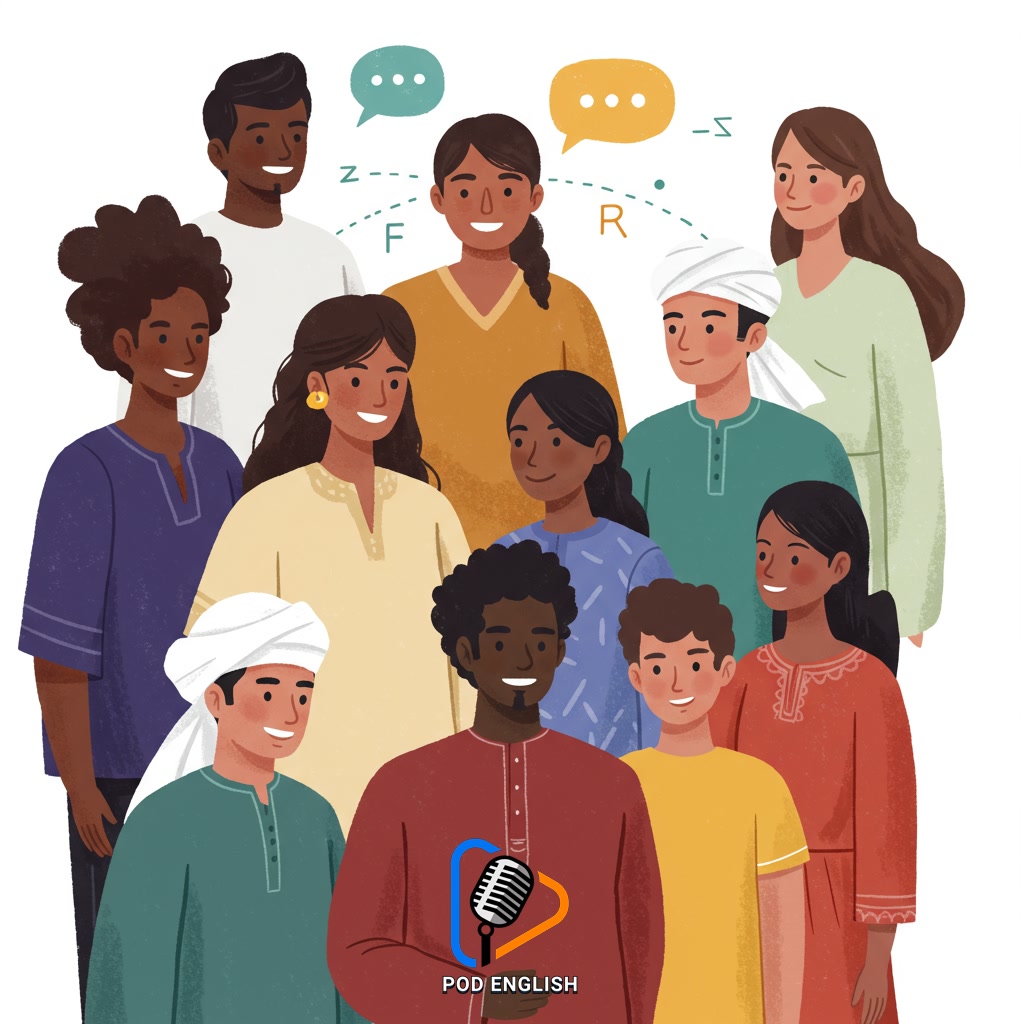Learn English
Unlock English Fluency with Cultural Competence

This content explores a unique approach to achieving English fluency. It emphasizes the crucial role of cultural competence in enhancing communication skills. By integrating cultural understanding into the process of learning English, speakers can navigate real-world interactions more effectively. This method goes beyond grammar and vocabulary, focusing on the nuances that lead to true proficiency and confidence when learning English.
Table of Contents
- Section 1: Understanding Cultural Competence in English Learning
- Section 2: Why Culture is Key to Real English Fluency
- Section 3: Bridging Communication Gaps Through Cultural Awareness
- Section 4: Practical Strategies for Developing Cultural Competence
- Section 5: Applying Cultural Understanding in Everyday English Interactions
- Section 6: The Long-Term Benefits of a Culturally Competent English Learner
Section 1: Understanding Cultural Competence in English Learning
Understanding cultural competence is a vital step in mastering English beyond basic grammar and vocabulary. It involves recognizing and respecting the customs, social norms, values, and communication styles of different English-speaking cultures. This includes understanding things like appropriate levels of formality, non-verbal cues, idiomatic expressions, and even how silence is used in conversation. Developing this awareness helps learners navigate real-world interactions smoothly, avoid misunderstandings, and build rapport with native speakers. It shifts the focus from simply speaking correctly to communicating effectively and appropriately in diverse contexts. By integrating cultural knowledge, learners gain confidence and achieve a more authentic and nuanced fluency, truly connecting with others through the language.

Section 2: Why Culture is Key to Real English Fluency
Achieving real English fluency goes far beyond simply knowing grammar rules and memorizing vocabulary lists. True proficiency means being able to communicate effectively and comfortably in a variety of real-world situations. This is where cultural competence becomes essential. Understanding the cultural context behind language use – including social norms, values, and non-verbal cues – allows speakers to interpret meaning accurately, respond appropriately, and avoid misunderstandings. For example, knowing when to be direct or indirect, how to use humor, or understanding body language varies significantly across cultures. Integrating this knowledge into your English learning journey helps you navigate conversations with confidence and build genuine connections, making your English truly fluent and natural.

Section 3: Bridging Communication Gaps Through Cultural Awareness
True fluency in English extends beyond linguistic accuracy to encompass effective communication across diverse contexts. This is where cultural awareness becomes indispensable. Understanding the nuances of different cultures – including body language, tone of voice, politeness levels, and directness in conversation – helps learners interpret messages accurately and respond appropriately. For instance, a direct question in one culture might be considered impolite in another, or a gesture could have vastly different meanings. By developing cultural competence alongside language skills, English learners can navigate potential misunderstandings, build rapport more easily, and participate in real-world interactions with greater confidence, effectively bridging communication gaps that grammar alone cannot address.

Section 4: Practical Strategies for Developing Cultural Competence
Developing cultural competence is an active process that significantly enhances English fluency by improving communication effectiveness. Practical strategies include actively seeking exposure to diverse cultures through media like films, books, and music, which provides context and insight into different perspectives and communication styles. Engaging directly with people from various backgrounds, whether in person or online, offers invaluable real-world practice. Cultivate mindful listening, paying attention to non-verbal cues and the underlying meaning, not just the literal words. Be open-minded, reflective about your own cultural assumptions, and willing to adapt your communication approach. Researching common customs, social etiquette, and communication norms of cultures you interact with frequently can prevent misunderstandings and build rapport, making your English interactions smoother and more successful.

Section 5: Applying Cultural Understanding in Everyday English Interactions
Applying cultural understanding in everyday English interactions means consciously using your knowledge to navigate conversations effectively. This involves paying attention not just to the words spoken, but also to non-verbal signals like body language, facial expressions, and tone of voice, which can vary significantly across cultures. It also requires recognizing potential differences in communication styles, such as directness or indirectness, formality levels, and acceptable topics of conversation. By adapting your approach, showing empathy, and being open to different perspectives, you can build stronger connections, avoid misunderstandings, and communicate with greater confidence and ease in diverse settings. This practical application is key to transforming learned competence into true fluency.

Section 6: The Long-Term Benefits of a Culturally Competent English Learner
Building on the ability to apply cultural understanding in everyday interactions, the long-term advantages for an English learner are significant. Beyond just avoiding misunderstandings, cultural competence fosters deeper connections with native speakers and people from diverse backgrounds. This leads to increased confidence in using English in various real-world situations, from professional settings to social gatherings. Over time, this enhanced ability to navigate cultural nuances accelerates overall fluency, opens doors to greater opportunities (like international study or career advancement), and enriches personal experiences by allowing for more authentic and meaningful communication. It transforms learning English from a purely linguistic exercise into a pathway for global engagement and personal growth.














